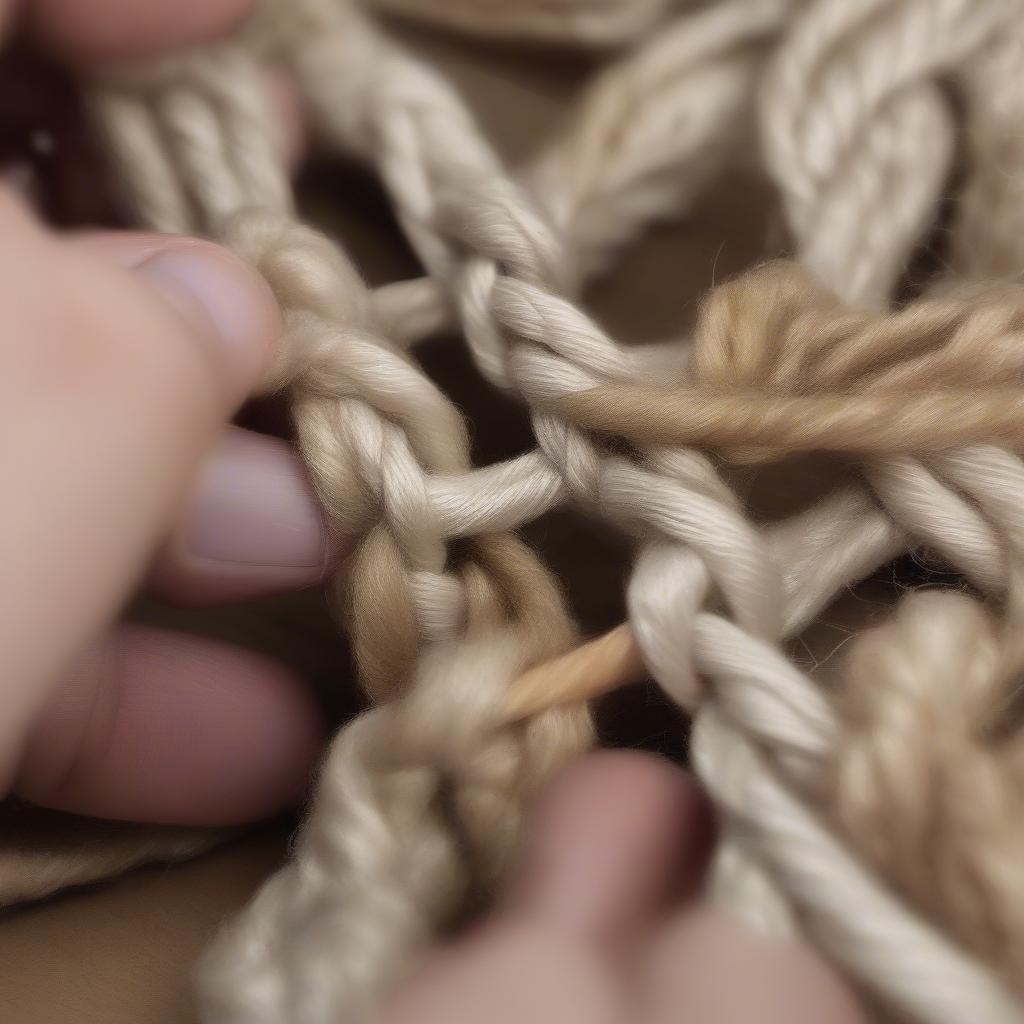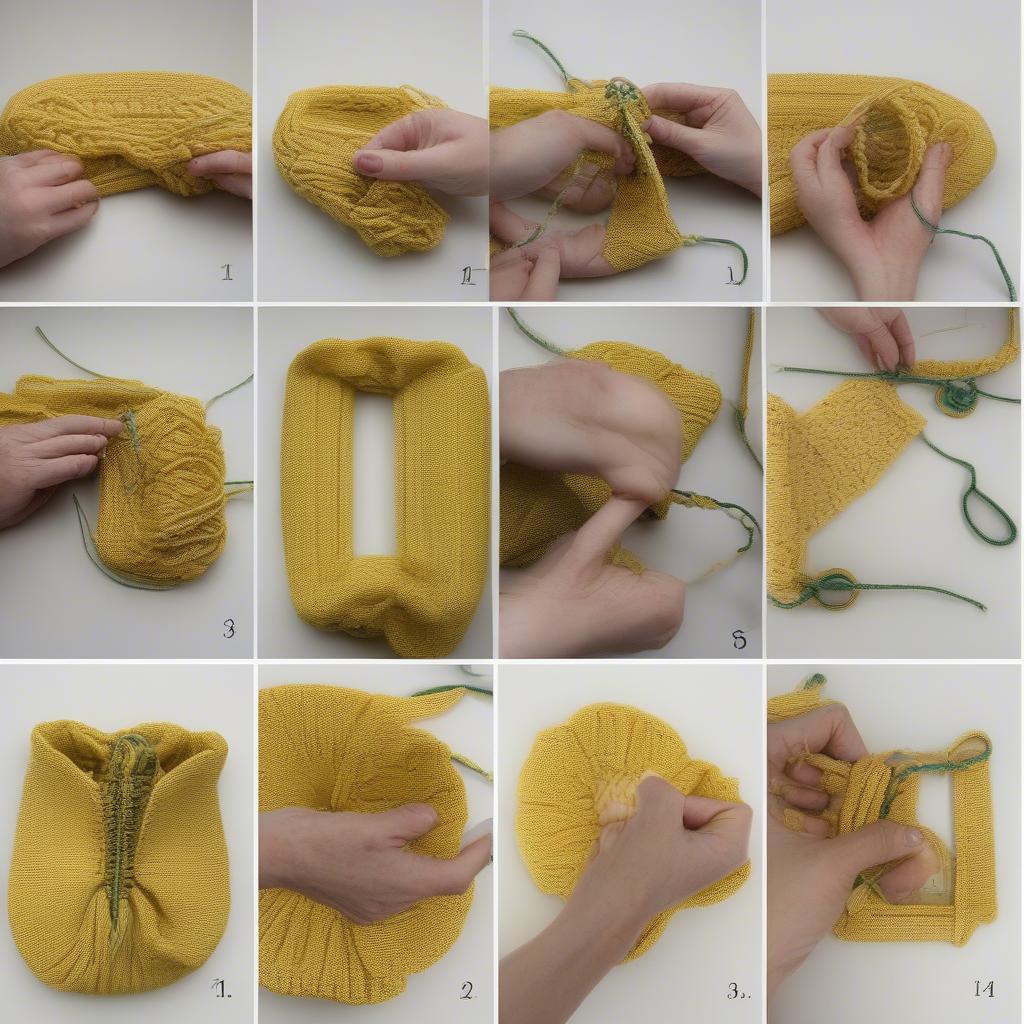Basket Weaving
How to Weave a Bilum Bag: A Step-by-Step Guide
Weaving a bilum bag, a traditional string bag from Papua New Guinea, is a captivating craft that connects you to a rich cultural heritage. This guide will equip you with the knowledge and techniques to create your own beautiful bilum, from choosing the right materials to mastering the looping technique.
Understanding the Bilum: More Than Just a Bag
The bilum is more than just a bag in Papua New Guinea; it’s a symbol of tradition, artistry, and practicality. These versatile bags are used for carrying everything from produce and firewood to babies and personal belongings.  Traditional Uses of Bilum Bags in Papua New Guinea Traditionally crafted from natural fibers, each bilum tells a story through its unique design and intricate knotting. Learning How To Weave A Bilum Bag allows you to participate in this enduring tradition.
Traditional Uses of Bilum Bags in Papua New Guinea Traditionally crafted from natural fibers, each bilum tells a story through its unique design and intricate knotting. Learning How To Weave A Bilum Bag allows you to participate in this enduring tradition.
Gathering Your Materials: What You’ll Need
Before you begin your bilum weaving journey, you need to gather the essential materials. Traditionally, bilums are made from natural fibers like jute or the inner bark of certain trees. However, you can also use readily available materials like strong yarn or twine. You’ll need a good amount of your chosen fiber, a pair of scissors, and a smooth surface to work on.
Preparing Your Yarn: The First Step
Once you’ve chosen your yarn, you’ll need to prepare it for weaving. Depending on the thickness of your chosen material, you might need to create a long, continuous strand. This can be achieved by carefully joining multiple strands together, ensuring a smooth and even thickness throughout.
Beginning the Loop: The Foundation of Your Bilum
The foundation of the bilum is a simple loop. Create a slip knot with your yarn, leaving a tail long enough to be incorporated into the weaving later.  Creating the Initial Loop for Bilum Weaving This loop forms the base upon which the rest of the bilum will be built.
Creating the Initial Loop for Bilum Weaving This loop forms the base upon which the rest of the bilum will be built.
The Looping Technique: Building Your Bilum
The core technique of bilum weaving involves a series of loops. You’ll insert your fingers through the initial loop and create a new loop with the yarn, pulling it through the original loop. This process is repeated continuously, creating a chain of interconnected loops that gradually expand to form the bag.
Shaping Your Bilum: Creating the Desired Form
As you continue looping, you can begin shaping your bilum. By adjusting the tension of the yarn and the size of the loops, you can create different shapes and sizes.  Shaping a Bilum Bag Using Looping Techniques Do you want a wide, shallow bag for carrying produce, or a deep, narrow bag for personal items? The choice is yours.
Shaping a Bilum Bag Using Looping Techniques Do you want a wide, shallow bag for carrying produce, or a deep, narrow bag for personal items? The choice is yours.
Adding Designs: Personalizing Your Bilum
Once you’ve mastered the basic looping technique, you can start experimenting with different designs. Traditional bilum bags often feature intricate patterns created by varying the color or thickness of the yarn. You can also incorporate decorative elements like beads or shells.
Finishing Your Bilum: Securing the Weave
Once you’ve reached the desired size, it’s time to finish your bilum. Securely tie off the yarn, weaving the end back into the existing loops to create a neat and durable finish. papua new guinea basket weaving This final step ensures your beautiful creation will last for years to come.
Conclusion: Your Bilum Weaving Journey
Learning how to weave a bilum bag is a rewarding experience. Not only have you created a beautiful and functional piece, but you’ve also connected with a vibrant cultural tradition. Remember, practice makes perfect. With each bilum you weave, your skills will grow, and your creations will become even more intricate and stunning.
FAQs
- What kind of yarn is best for bilum weaving? Strong, durable yarn like jute or twine works well. You can also experiment with other natural fibers.
- How long does it take to weave a bilum bag? The time varies depending on the size and complexity of the design. A simple bag can be completed in a few hours, while more intricate designs can take days.
- Can I wash my bilum bag? Yes, hand-washing with mild soap is recommended.
“The beauty of bilum weaving lies in its simplicity and versatility,” says renowned textile artist, Abeni Okoye. “With just a few basic techniques, you can create an endless variety of beautiful and functional pieces.”
“Bilum weaving is a meditative and rewarding craft,” adds Kulap Kulasiri, a master weaver from Papua New Guinea. “It’s a way to connect with your hands, your creativity, and a rich cultural heritage.”
Need assistance? Contact us at Hanoi, Vietnam or Tech Avenue, Suite 12, San Francisco, CA 94105, USA. We have a 24/7 customer support team.
